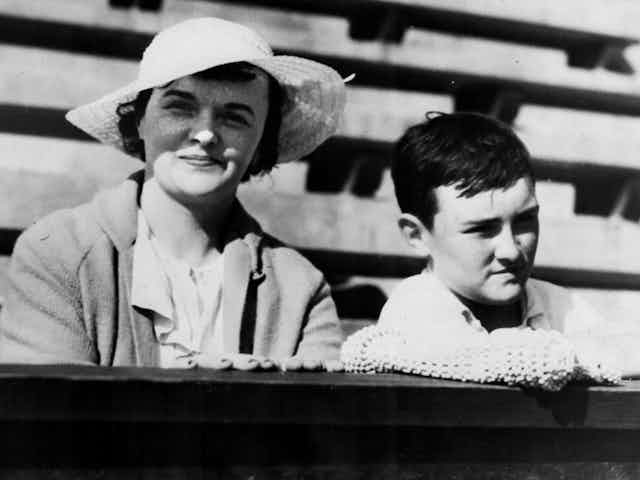In 1925, F. Scott Fitzgerald published “The Great Gatsby.” Four years later, Ursula Parrott published her first novel, “Ex-Wife.”
I probably read “The Great Gatsby” a dozen times between junior high school and my late 20s. But I had never even heard of Ursula Parrott or her 1929 bestseller until I stumbled across a screenplay adaption of one of Parrott’s short stories.
Fitzgerald, in fact, had been hired to write that screenplay. Even though “Infidelity” was never produced because it was deemed too risqué by Hollywood’s Production Code Administration, its very existence piqued my curiosity.
Why was the most famous author of the Jazz Age hired to adapt a story by a totally unknown writer? And who on earth was Ursula Parrott?
I acquired a used copy of “Ex-Wife” on eBay and soon realized that Ursula Parrott was not unknown; she was just forgotten.
In April 2023, I published a biography of Parrott. Since then, I’ve continued to try to understand just how and why she and her writing drifted into obscurity – how “The Great Gatsby” is required reading but few have heard of “Ex-Wife” or its author.
Greeted by mixed reviews
Both “Ex-Wife” and “The Great Gatsby” are modern novels of love and loss, money and (mostly bad) manners. They’re set in New York and saturated with the energy, language and spirit of the time. Both garnered mixed reviews, deemed by many critics as entertaining and of the moment but not great literature.
At first, “Ex-Wife” was far more successful than “Gatsby,” blasting through a dozen printings and selling over 100,000 copies. It was translated into multiple languages and reprinted in paperback editions through the late 1940s.
Meanwhile, “The Great Gatsby” went through a mere two printings totaling less than 24,000 copies, not all of which sold. By the time Fitzgerald died in 1940, the novel had essentially been forgotten.
“Ex-Wife” centers on a 24-year-old woman named Patricia whose husband is divorcing her. Supporting herself with a job in department store advertising, she learns to navigate life in Manhattan as a divorcée.
Whereas “The Great Gatsby” is largely a suburban novel with trips into the city, “Ex-Wife” is fully immersed in Manhattan, especially Greenwich Village, where Parrott herself lived after she married her first husband. The novel’s characters drink Clover Clubs, Alexanders, brandy flips and Manhattans while frequenting the Brevoort, the Waldorf, Delano’s and Dante’s.
“Ex-Wife” revels in the rhythms of the city: One chapter even includes musical bars from George Gershwin’s hit “Rhapsody in Blue” sprinkled between paragraphs.
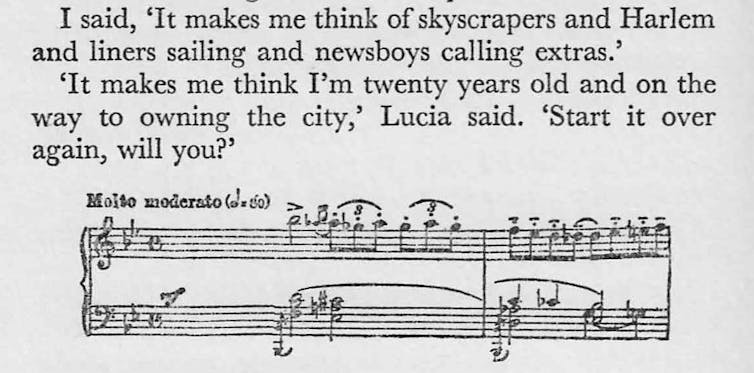
But “Ex-Wife” is not all martinis and music. Parrott uses it to address, in unsparing directness, the challenges that women faced and the limited paths available to them. This alone sets it apart from the male protagonists of “The Great Gatsby” and the novel’s scant attention to the experiences of its female characters.
Parrott’s witty and biting novel was, in fact, concerned first and foremost with a generation of young women who had abandoned Victorian sensibilities: They got educations and jobs, drank, had premarital and extramarital sex, and cast aside pretensions of being the fairer, gentler sex.
But in shedding these mores, they also sacrificed protections. Patricia reflects on how men of their generation used women’s self-sufficiency and independence as an excuse to leave them to fend for themselves: “Freedom for women turned out to be God’s greatest gift to men.”
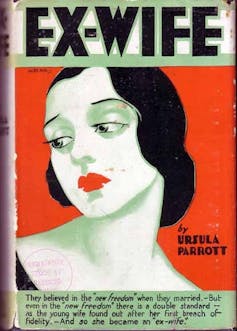
“Ex-Wife” depicts a culture in which women often suffer at the hands of men. At one point, Patricia is brutally raped. In another scene, her husband throws her through a glass window during a fight, a moment as harrowing for its rendering of domestic violence as it is for Pat’s nonchalant reaction to it. In one of the book’s most moving episodes, Pat is compelled to procure a risky abortion at her soon-to-be ex-husband’s insistence but at her financial, physical and psychological cost.
“One survives almost everything,” Patricia unhappily realizes.
She survives, however, thanks only to a streetwise female friend and mentor, her own ability to earn a living, practiced if not heartfelt flippancy, the numbing effects of alcohol and an acceptance that everything in her life is both transient and precarious.
Art imitates life
Ursula Parrott had a keen understanding of gender inequality and male privilege: Her own publisher made passes at her, her banker once proposed sexual favors in lieu of interest payments, and she experienced a rape not unlike the one she depicted in “Ex-Wife.”
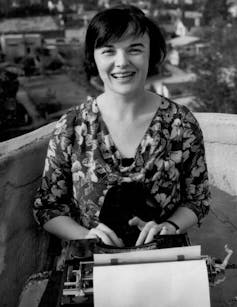
Before she became a novelist, Parrott, who earned a degree in English from Radcliffe, had desperately wanted a career in journalism. However, she was barred from employment at all New York newspapers because her ex-husband, reporter Lindesay Parrott, marked his professional territory by warning the city’s editors – all male, of course – not to hire her.
There is a similar form of male chauvinism at work in the way that Parrott’s writing was often treated by critics during her lifetime. Many described her books and short stories as romantic or melodramatic, fit only for consumption by women.
“Melodramatic,” Parrott once smartly observed in a letter, is “just a word men use to describe any agony that might otherwise make them feel uncomfortable.”
Gatsby’s boosters
I am convinced that “Ex-Wife” deserves a place alongside Fitzgerald’s novel in classrooms and in the hands of a new generation of readers based on the merits of its style and contents.
But more importantly, I’m convinced that the reason Fitzgerald’s novel is so ingrained in American life and letters has little to do with its originality, craft or quality and everything to do with the way books were marketed and promoted over the arc of the 20th century.
“The Great Gatsby” owes its resuscitation from obscurity in the 1940s to the efforts of prominent male critics and scholars – and even to the American military.
Fitzgerald had important friends and admirers, among them the esteemed literary critic Edmund Wilson, who was instrumental in the republication of “Gatsby” in 1941. Thanks to Wilson’s efforts, Fitzgerald’s novel could be taken up by other well-regarded and influential scholars like Lionel Trilling, who wrote admiringly about Fitzgerald in The Nation in 1945, and Malcolm Cowley, who edited collections of Fitzgerald’s short stories and celebrated his literary gifts.

After Trilling, a parade of writers took up Gatsby’s cause, praising it for precisely the same traits that might also have been found in “Ex-Wife,” had anyone bothered to look: its use of contemporary language, its critique of hedonistic behavior, its rich attention to period detail and its depressing portrayal of aimless, unmoored characters trying and failing to find meaning in modern America.
Consider just one instance of differential legacy-tending: during World War II, the American military provided over 150,000 free copies of “The Great Gatsby” to American soldiers – ensuring a readership that well exceeded the number of people who had, to date, actually bought the book.
But when the Victory Book Campaign started its drive to collect novels for overseas servicemen, it explicitly warned potential donors to desist from handing over any “women’s love stories,” specifically naming Ursula Parrott among the authors whose books they would not be putting in soldiers’ hands.
Making the case for ‘Ex-Wife’
There are, of course, many other factors at play here. There’s the tendency to romanticize the tragic lives of male authors who drink heavily, spend recklessly and make bad decisions – departments in which Fitzgerald and Parrott seem pretty equally matched.
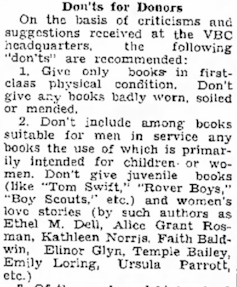
There’s also what can only be described as a collective refusal to categorize “The Great Gatsby” as a romance novel, a category that has historically been used to diminish women’s writing.
“The Great Gatsby”‘s ascension from obscurity to ubiquity is only one example of how Parrott’s book was passed over. “Ex-Wife” and William Faulkner’s “The Sound and the Fury” were marketed alongside each other by publishers Jonathan Cape and Harrison Smith. Faulkner biographer Carl Rollyson observes that Faulkner’s book sold “less than a tenth” as many copies as Parrott’s. But Faulkner amassed critical praise in the right places, and Parrott, Rollyson concludes, “did not manage herself or her work the way writers like Faulkner did.”
But this is not merely a question of self-management. It is true that Parrott did not publish during the last, difficult decade of her life. After a series of public scandals, missed deadlines, ongoing battles with alcohol and financial missteps, she tried to write herself back into literary society, to no avail.
The real difference, in my view, is that Parrott had nobody to tend to her legacy – no Trilling or Wilson or Cowley in her corner to bring her writings back into circulation or make a case for her genius or her novel’s importance.
However, there is no reason to believe that the erasure of “Ex-Wife” from cultural memory is a fait accompli, or that “The Great Gatsby” will always be the go-to Jazz Age novel. Writer Glenway Wescott, in his February 1941 tribute to Fitzgerald, wrote of “The Great Gatsby”: “A masterpiece often seems a period-piece for a while; then comes down out of the attic, to function anew and to last.”
Consider this article a “better late than never” effort to make the case that “Ex-Wife” deserves to come out of the attic of America’s lost literary past to be read, discussed and taught as one of the important American novels of the 1920s.
After McNally Editions republished “Ex-Wife” in May 2023, reviewers remarked on the “freshness of its prose” and the “remarkable erotic freedom” it depicted, as The New York Times review put it; The Baffler described Parrott’s writing as “deftly crafted, wryly observed, and thoroughly unsettling.”
“The Great Gatsby” is a fantastic period piece. But “Ex-Wife” manages to be both that and to remain timely. Women’s lives and bodies continue to be subject to all manner of scrutiny, critique and legislation, which means that many of the things that Parrott wrote about in “Ex-Wife” – the double standard, women in the workplace, work-life balance, rape and even abortion – remain astonishingly relevant today.
In “Ex-Wife” – and in many of her 19 other books and over 100 stories – Parrott wrote from what amounts to Daisy Buchanan’s point of view rather than Nick Carraway’s, to use “The Great Gatsby” again as a reference point.
Imagine what a different story “Gatsby” would have been had the reader seen the world through Daisy’s eyes?
Or don’t imagine. Rather, give “Ex-Wife” a read.

